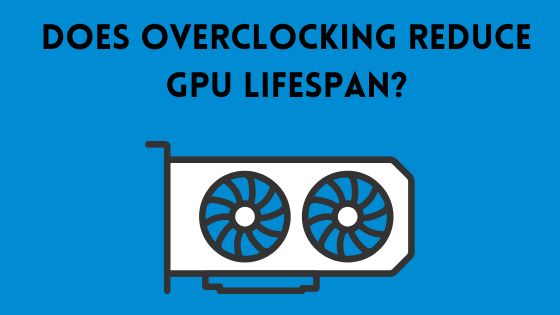What Do CUDA Cores Do?
CUDA cores are parallel processing units within a graphics processing unit (GPU) that are specifically designed for executing complex mathematical calculations.
These specialized processing cores play a crucial role in modern GPUs by enabling advanced capabilities like accelerated parallel computing. But what exactly are CUDA cores, and what do they do?
In this comprehensive guide, we will discuss about what CUDA cores are, how they work, their benefits and applications, and why they matter.
Whether you are a gaming enthusiast looking to understand GPU specifications better or a developer leveraging GPU parallelism, this article will provide valuable insights into the world of CUDA cores.
Read on to uncover everything you need to know about these integral components of NVIDIA GPUs.
How Do CUDA Cores Work?
CUDA, which stands for Compute Unified Device Architecture, is a proprietary parallel computing platform created by NVIDIA. The CUDA architecture comprises of two key components:
- The CUDA programming model: This provides developers an interface for leveraging the parallel processing power of the GPU.
- The CUDA cores: These act as the parallel processing engines within NVIDIA GPUs.
CUDA cores are specifically optimized for data parallelism, meaning they can simultaneously process multiple data elements in parallel. This allows them to efficiently execute compute-intensive, highly parallel tasks.
These specialized cores function as stream processors, capable of running thousands of lightweight threads concurrently. Each CUDA core can manage one or more threads at a time, enabling massive parallelism.
The threads are organized into blocks that are distributed across a grid of CUDA cores. This grid can scale to tens of thousands of cores, allowing extensive parallel processing.
When a kernel function is called, the blocks of threads are distributed to idle CUDA cores for execution. The GPU scheduler efficiently manages these threads across the available cores.
CUDA cores feature a SIMT (Single Instruction, Multiple Thread) architecture, in which groups of 32 threads (called warps) execute one common instruction at a time. This enables lockstep execution while allowing each thread to process different data.
In this manner, CUDA cores can carry out tens of trillions of tightly coordinated parallel executions per second. This makes them ideally suited for compute-intensive tasks requiring high concurrency.
Benefits of CUDA Cores for Gaming
Gaming is one of the major application areas where CUDA cores play a pivotal role in delivering cutting-edge experiences. Let’s examine the specific advantages they provide:
1. Enabling Realistic Graphics
Modern games demand highly realistic and immersive graphics with features like ray tracing, complex textures, detailed shadows, and advanced lighting effects.
CUDA cores are responsible for performing the heavy computational tasks required for rendering and processing graphics, such as shading, lighting, and texture mapping.
The thousands of cores in a GPU can process graphical operations in parallel, enabling smooth performance even on graphically intensive games. More CUDA cores translate to higher throughput for graphical workloads.
2. Physics and Particle Simulations
Many games incorporate physics and particle effects like smoke, fire, fluids, cloth simulation, and destructible environments.
Generating these effects involves computationally intensive mathematical operations like vector and matrix calculations. By offloading these types of workloads to CUDA cores, more realistic physics and particle effects can be rendered without compromising performance.
3. AI and NPC Behavior
The artificial intelligence and behaviors of non-player characters also demand considerable computing horsepower. With CUDA cores handling tasks like pathfinding, situational analysis, and decision making, more intelligent and dynamic NPC behavior can be incorporated into games.
4. Higher Framerates
More CUDA cores means that a GPU can process graphics and game physics simulations faster and handle higher framerates. This results in much smoother gameplay, with reduced input lag and latency. Gamers can enjoy seamless, high-framerate visuals, especially on high-resolution displays.
5. Ray Tracing
Ray tracing is an advanced graphics technique that simulates the physical behavior of light to render hyper-realistic effects like reflections, shadows, and global illumination.
Ray tracing involves computationally intensive tasks like ray-surface intersection testing and shading calculations, which can be greatly accelerated by massively parallel CUDA cores. This enables real-time ray tracing in modern gaming GPUs.
6. DLSS Support
Deep Learning Super Sampling or DLSS utilizes AI and deep learning to boost frame rates in games while generating sharp image quality. DLSS relies heavily on the tensor cores and AI processing capabilities powered by CUDA cores to intelligently upscale frames and improve performance.
7. VR and Multi-View Rendering
Emerging applications like VR demand separate perspectives to be rendered for each eye, requiring nearly double the graphics throughput. With an abundance of CUDA cores, GPUs can efficiently deliver the performance needed for smooth, immersive VR experiences and multi-view rendering.
As we can see, CUDA cores are instrumental in enabling cutting-edge graphics, physics, AI, and performance demanded by modern games and gaming technologies. Their parallel processing power unlocks new possibilities for richer gaming worlds and experiences.
CUDA Cores vs. AMD Stream Processors
CUDA cores are often compared to the stream processors found in AMD GPUs since they perform similar roles. But there are some key differences:
- AMD stream processors are more generic processing units while Nvidia designed CUDA cores specifically for parallel computing workloads.
- CUDA cores are programmed through the CUDA framework which is optimized for general-purpose computing. AMD stream processors use OpenCL.
- Nvidia GPU architectures implement more CUDA cores than AMD has stream processors. For example, the Nvidia RTX 3080 has 8704 CUDA cores while the AMD RX 6800 XT has 4608 stream processors.
- Efficiency of cores differs due to architectural variations between Nvidia and AMD GPU designs, like register size, caches, and math processing capabilities.
However, both serve the purpose of accelerating parallel computations required for graphics, gaming, and other workloads. The performance difference depends largely on factors like architecture, process node, memory, and software optimizations.
How Many CUDA Cores Do You Need?
The CUDA core count gives a general idea of the parallel processing capabilities of a GPU but does not indicate actual real-world performance on its own. When comparing GPUs, consider factors like:
- Overall architecture: Newer architecture designs improve core efficiency and performance.
- Memory configuration: Faster and higher capacity VRAM impacts gaming performance.
- Clock speeds: Higher GPU clock speeds boost computational throughput.
- Software optimizations: Well-optimized software extracts the most performance from the CUDA cores.
- Target resolution and FPS: A 4K 60FPS GPU needs more cores than a 1080p 30FPS GPU.
- Game requirements: Some games better utilize CUDA cores for graphics than others.
- Benchmarks: Check benchmarks on reliable tech sites to gauge real-world gaming performance.
- Budget: High-end GPUs pack in more CUDA cores at an increased price.
There is no universal threshold for an optimal number of CUDA cores. It ultimately depends on your GPU budget, gaming requirements, and performance expectations.
Applications Beyond Gaming
While their parallel processing capabilities significantly benefit gaming, CUDA cores are also widely used for general purpose computing beyond graphics.
Some prominent examples include:
Scientific Computing
Simulating complex physics phenomena and modeling fluid dynamics, molecular interactions, weather patterns etc involves massive parallelism, making CUDA cores ideal for accelerating scientific workloads.
AI and Machine Learning
The inherently parallel nature of neural networks used in AI/ML maps well to the many-core architecture of CUDA cores, enabling orders of magnitude faster training and inference.
Video Editing
Parallel capabilities of CUDA cores can speed up video transcoding, effects, and editing tasks massively by offloading them from the CPU. This accelerates workflows for content creators.
Finance Modeling
Running Monte Carlo simulations for risk analysis and derivatives pricing requires executing the same computations on large datasets. This embarassingly parallel workload is perfect for CUDA cores, enabling faster and more accurate financial models.
Medical Imaging
Image segmentation, registration, reconstruction and other processing tasks on medical scans can be made faster using CUDA cores’ parallel processing power, improving clinical workflows.
Data Analytics
Analytics on large datasets like Apache Spark workloads involve parallel aggregation, filtering, and querying. Performing these on CUDA cores instead of CPUs results in significant speedups.
In these domains, CUDA cores can deliver 100x or higher throughput compared to CPUs for certain workloads. Their versatility makes them immensely valuable for general purpose computing.
CUDA Cores in NVIDIA’s Latest RTX GPUs
NVIDIA has incorporated increasing numbers of more advanced and efficient CUDA cores in their latest generations of GPUs like the RTX 3000 series:
| Graphics Card | CUDA Cores |
|---|---|
| RTX 4090 | 16384 |
| RTX 4080 16GB | 9728 |
| RTX 4080 12GB | 7680 |
| RTX 3090 Ti | 10752 |
| RTX 3090 | 10496 |
| RTX 3080 Ti | 10240 |
| RTX 3080 | 8704 |
| RTX 3070 Ti | 6144 |
| RTX 3070 | 5888 |
| RTX 3060 Ti | 4864 |
| RTX 3060 | 3584 |
Driven by major leaps in manufacturing processes, these latest RTX GPUs feature more CUDA cores than ever before, delivering new levels of performance.
Conclusion
CUDA cores serve as the parallel processing workhorses within NVIDIA GPUs. Their ability to execute thousands of simultaneous operations makes them perfectly suited for accelerating graphics, gaming, simulations, AI, and numerous other parallel workloads.
With each new generation, NVIDIA incorporates more CUDA cores that are also more advanced and efficient. This provides a steady increase in computational horsepower to drive innovations in both gaming and high-performance computing.
Their flexibility, programmability, and highly parallel architecture lend CUDA cores universal applicability across multiple domains. Developers can tap into their processing capacity using languages like CUDA and OpenCL for a multiples increase in application performance.
So, in summary, CUDA cores are integral to unlocking the true processing potential of GPUs. Their parallel execution capabilities deliver tremendous speed, efficiency and performance that are critical for both entertainment and serious computing.
FAQs
Are CUDA cores worth it
Yes, CUDA cores are worth it because they enable much faster parallel processing capabilities on NVIDIA GPUs, providing significant performance benefits for graphics, gaming, AI, and numerous other workloads.
Is 1000 CUDA cores a big difference?
Yes, a difference of 1000 CUDA cores is quite significant as it provides substantially more parallel processing power, leading to noticeably higher performance.
Does CUDA cores increase FPS?
Yes, a higher number of CUDA cores allows a GPU to deliver higher frame rates and smoother gaming performance. More CUDA cores means more graphical operations can be processed per second.
Why is CUDA better than AMD?
CUDA has software and architecture optimizations that enable more efficient use of the GPU cores. But AMD offers competitive performance too with progress in software and hardware integration.
How much faster is CUDA than CPU?
For highly parallel workloads, CUDA can provide over 100x speedups versus CPU processing. However, performance gain depends on the specific application.





